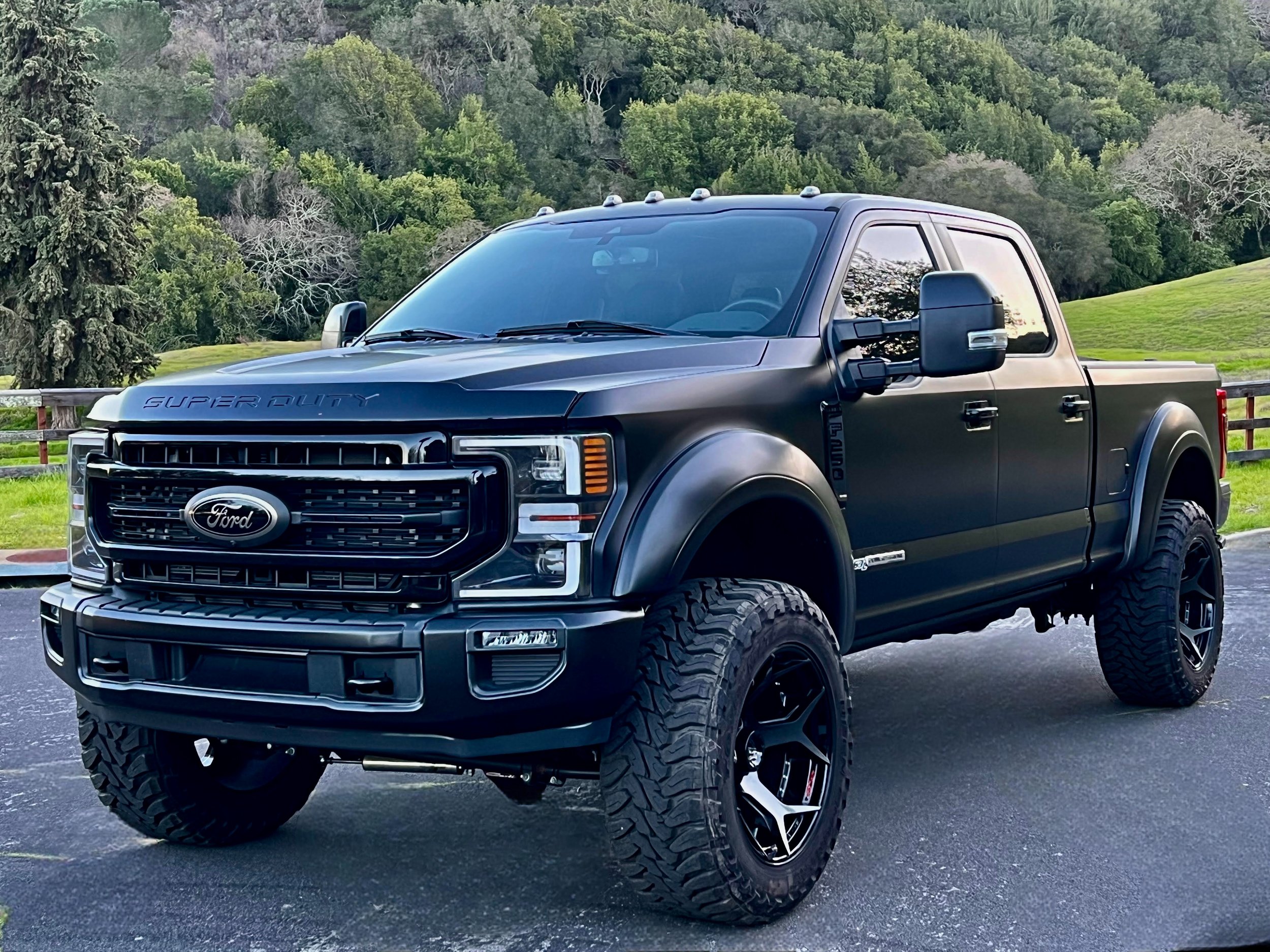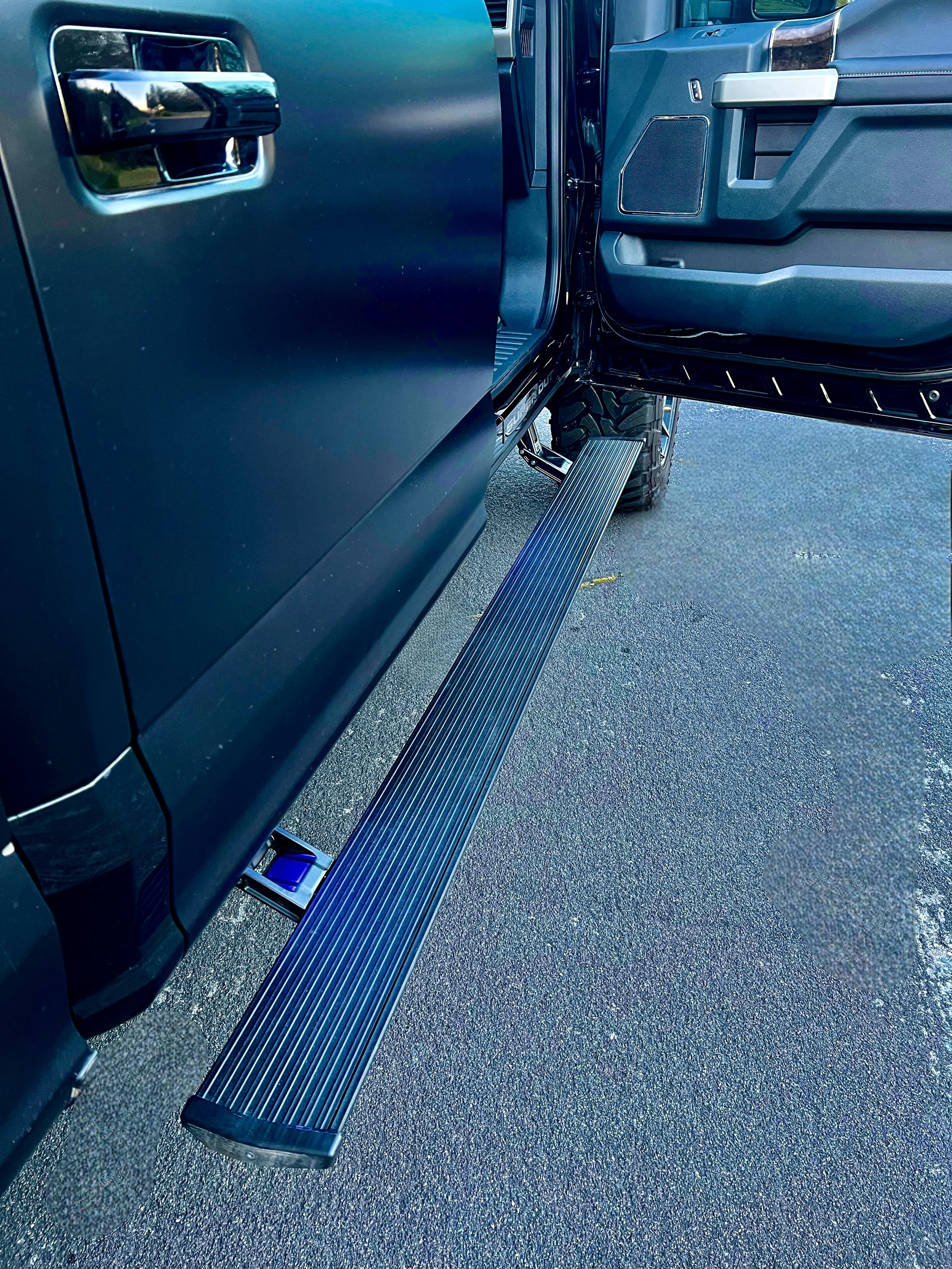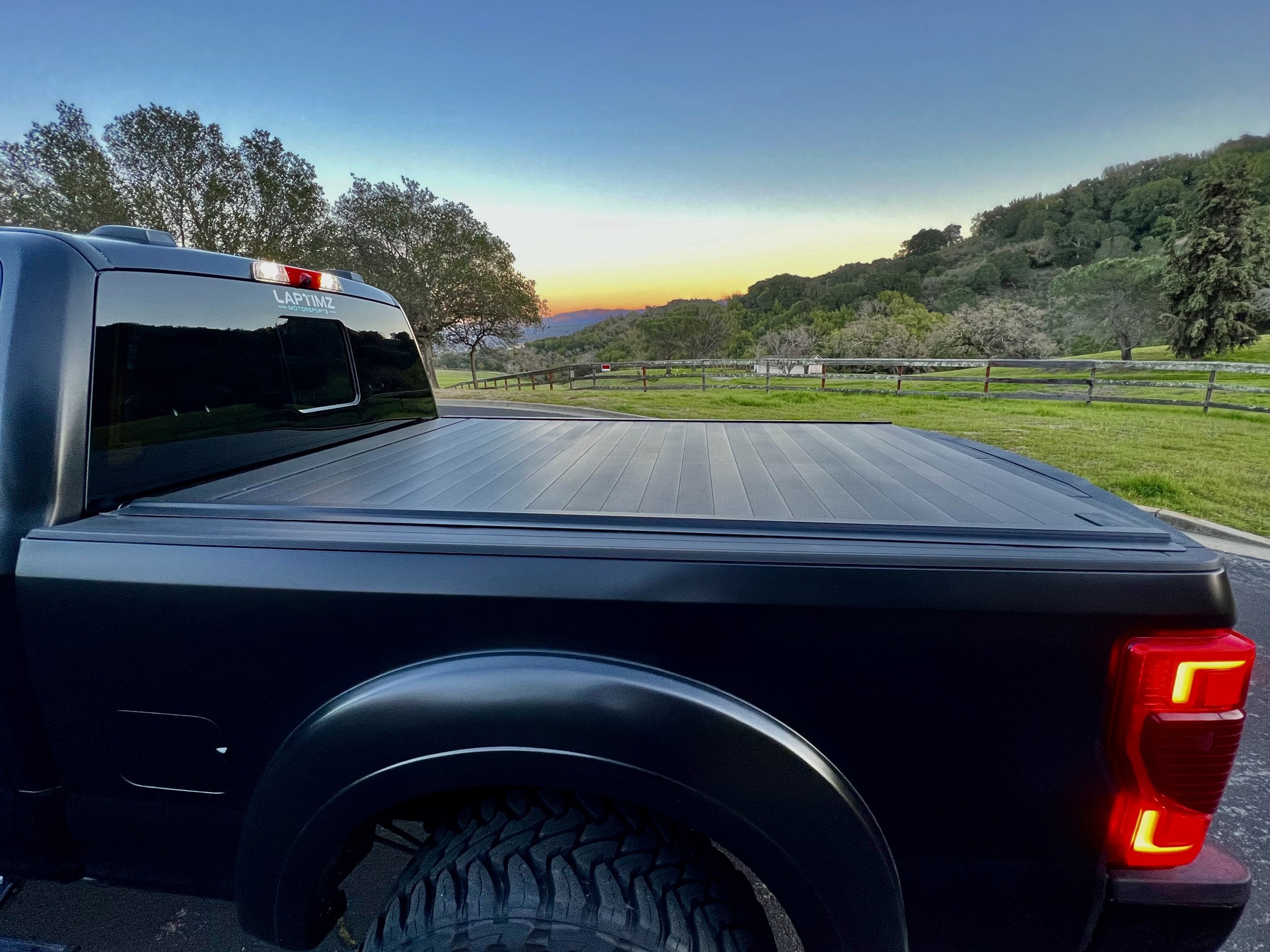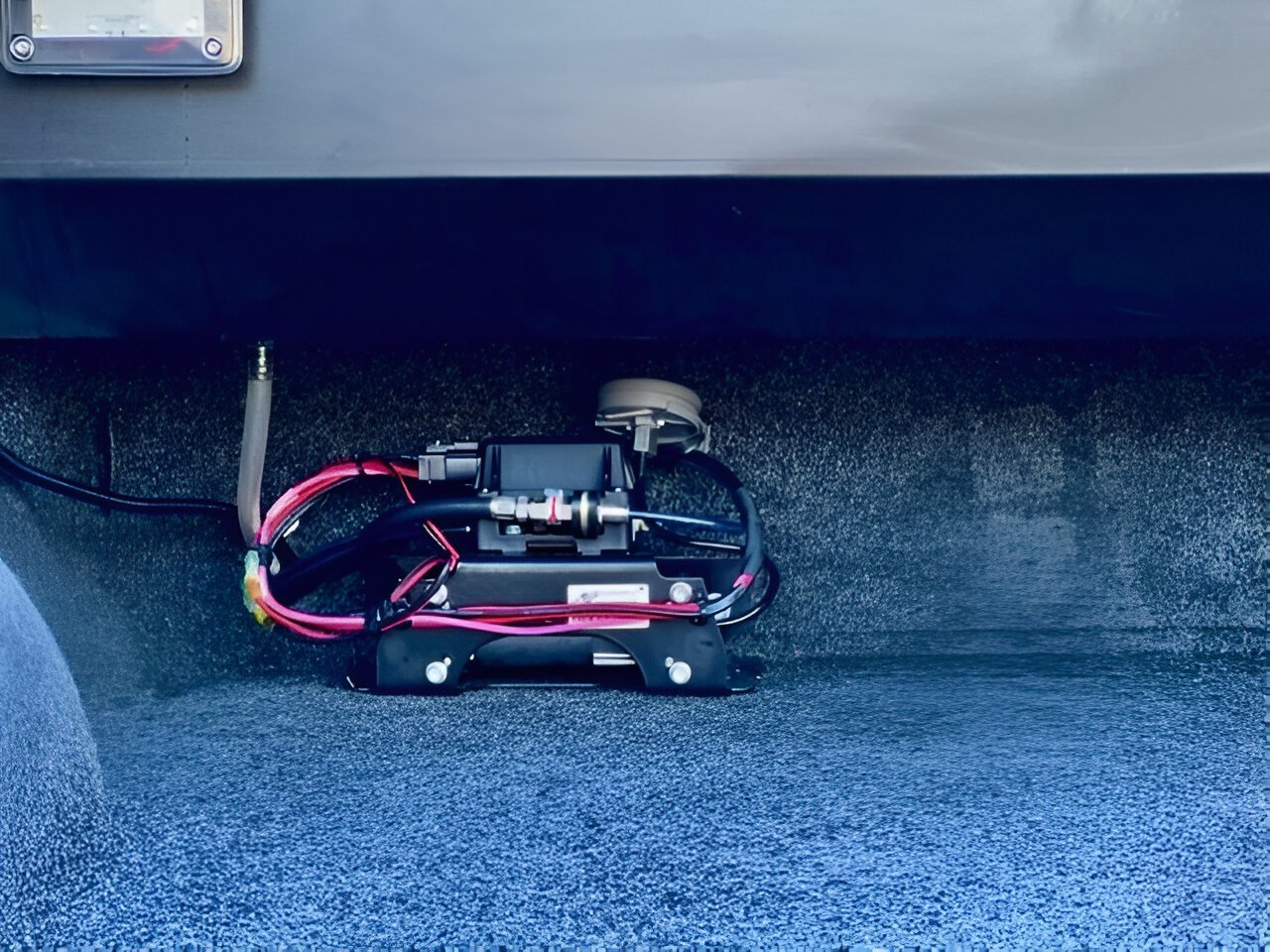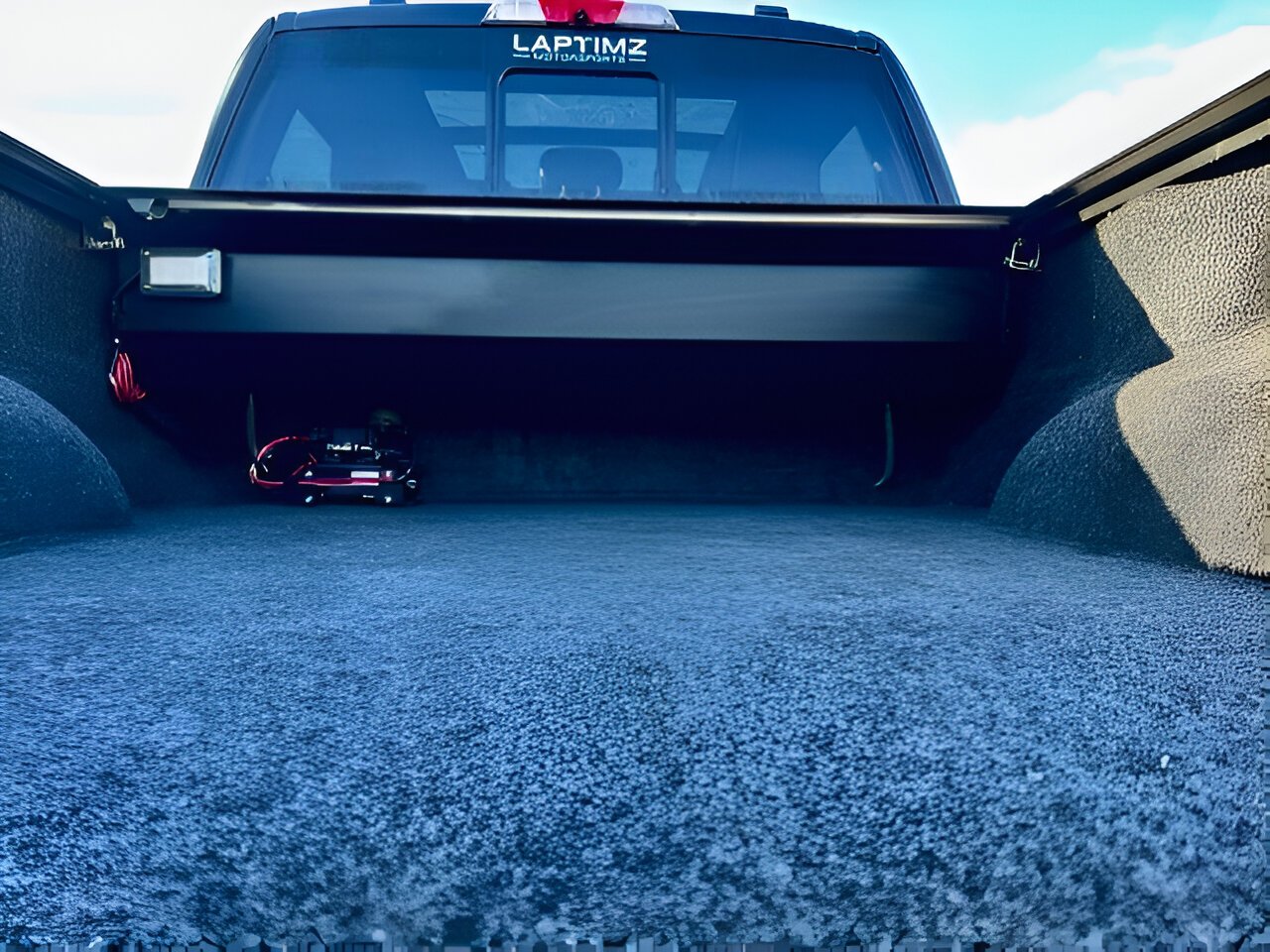LTAC F250 DIESEL
Finding the Right Truck for Real Life
A story about building something that actually fits
I didn’t set out looking for a diesel work truck. At the time, I had just bought a new high-performance pickup, and I genuinely liked it. It was fast, fun, comfortable. It had everything you’d want in a well-equipped modern truck. But things changed. I started towing more, hauling heavier loads, and heading into less predictable places. Long weekends with the family turned into trailer trips across the state. I didn’t buy that first truck expecting to tow with it. But that became part of my routine.
That truck had all the horsepower in the world, but it wasn’t designed for towing. The suspension was built for fast desert driving, and the rear end would squat heavily under load. It just wasn’t stable when it mattered most. I didn’t blame the truck. It was never intended for this. But I needed something that was.
So I started looking. I wasn’t chasing bragging rights or spec sheets. I wanted something that could do everything. It needed to tow comfortably, carry gear, work during the week, load up the family, and clean up well enough for a night out. I looked across every brand and trim level. Today’s trucks are all strong in their own way. But the one I landed on was the one that met the most needs with the fewest compromises.
Once I had the truck, the plan wasn’t to overhaul it. The factory platform was strong. What it needed was refinement.
We started with the suspension, because that defines how a truck like this feels in real life. It’s one thing to have the right numbers on paper. It’s another to have a setup that actually rides well, hauls confidently, and stays composed when the road gets rough.
The shocks are remote reservoir units, tuned for consistent damping under load and over long drives. They stay cool, resist fade, and do a good job of keeping the truck settled whether you're towing, commuting, or just driving empty. They strike that balance between comfort and control that most factory setups miss.
The front springs raised the stance and added usable travel without making the ride harsh. Steering feel improved with small adjustments to geometry, and the front axle stayed properly centered. It all came together to make the truck feel planted, stable, and more connected to the road, even when pushing through uneven terrain or cruising at speed.
In the rear, I kept a spring setup that maintained payload capacity and added air support for control under load. It gave me flexibility without forcing a tradeoff. When aired up, the truck towed level and firm. When aired down, the ride stayed smooth and compliant. There was no compromise. Just proper function.
We also made a few subtle exterior changes that added value without shouting. One thing I’ve always paid attention to is proportion. I’ve never been a fan of trucks with tires that look out of place, whether they’re too big or too small for the body. Symmetry matters. The tire setup we chose gave the truck a solid stance and real grip without throwing off the visual balance. It looked like it belonged. Nothing exaggerated. Just clean, usable fitment.
The body was wrapped for protection and easy upkeep. No decals. No chrome. Just a clean, subtle finish that made the truck easier to live with.
Inside, the truck had everything it needed from the factory. It was quiet, comfortable, and well laid out. Entry and exit were improved with automatic steps. The bed got a powered locking cover and a liner that made it useful for everything from hauling lumber to setting up at the beach. These are the kinds of changes that don’t draw attention, but they matter when you live with the truck every day.
This truck ended up filling every role I needed. It pulled the trailer, hauled the gear, took the family to the mountains, and never felt out of place when it was cleaned up for dinner. I wasn’t hauling tools or working construction. But I was loading up crate engines, heavy tire and wheel sets, and large parts shipments — the kind of stuff that weighs hundreds or even thousands of pounds and needs real payload to move safely. That was the goal from the beginning. One truck that could do it all.
The best part is, I never had to touch the drivetrain. No tuning. No emissions workarounds. No hunting for power I didn’t need. The torque was already there. The reliability was already there. And the warranty stayed intact. That matters more than any spec on paper.
For me, that’s what a good truck is. Not one that chases a trend or tries to be something it’s not. But one that fits your life, does the work, and gets you home without ever making a scene.

